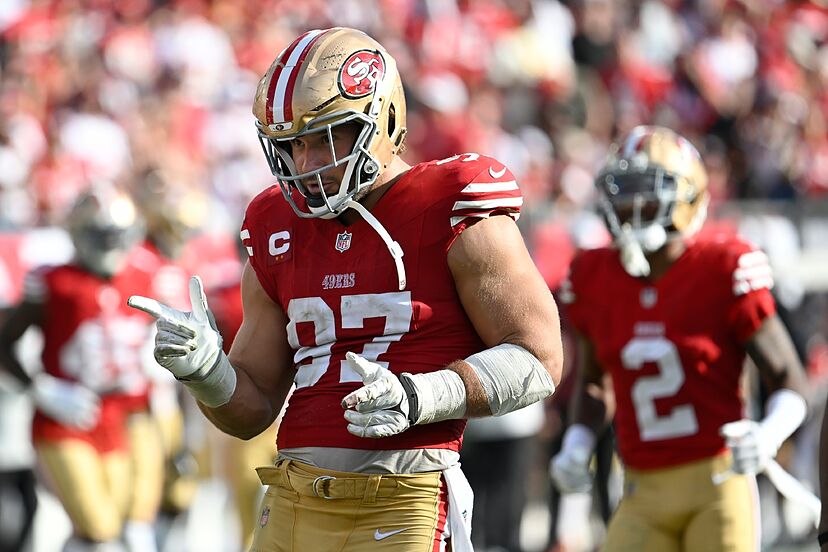In a unique blend of politics and sports, President Donald Trump’s iconic rally dance has taken the NFL by storm. Originally a hallmark of Trump’s campaign events, the dance—with its characteristic arm and hip movements—has found new life as a celebratory gesture among professional football players. The trend gained widespread attention when San Francisco 49ers defensive end Nick Bosa performed the dance after a sack during a game against the Tampa Bay Buccaneers.
The Dance Goes Viral
Nick Bosa’s decision to incorporate Trump’s moves into his on-field celebrations came as no surprise to many fans. A vocal supporter of Trump, Bosa has not shied away from displaying his political views in the past. However, his homage to the President-elect garnered additional scrutiny due to a recent fine he received from the NFL. Bosa was penalized $11,255 for wearing a “Make America Great Again” hat during a post-game interview, which the league ruled as a violation of its uniform policy.
Bosa’s sack dance instantly went viral on social media, with fans and commentators debating its significance. Some saw it as a lighthearted nod to the President, while others viewed it as a controversial political statement. Trump himself praised Bosa’s performance in a statement, saying, “Nick’s a great guy and a great player. I love seeing our NFL stars having fun and showing their patriotism.”
More Players Join the Trend
Bosa isn’t the only player adopting Trump’s signature moves. Las Vegas Raiders tight end Brock Bowers celebrated a touchdown with the dance during a recent game, drawing cheers from the crowd. When asked about it later, Bowers said, “I’ve seen everyone doing it, and I thought it was cool.”
Similarly, Tennessee Titans wide receiver Calvin Ridley and Detroit Lions defensive end Za’Darius Smith have both added the dance to their celebration routines. Even college football players and international soccer stars have embraced the trend, demonstrating its growing popularity. A viral clip of English soccer club Barnsley players performing the dance during a goal celebration further underscores its widespread appeal.
Cultural and Political Reactions
The sudden popularity of Trump’s dance in professional sports has sparked a broader cultural conversation. While many fans see the trend as a fun and harmless tribute, critics argue that it brings politics into a space traditionally seen as an escape from political discourse. The NFL has long struggled with the balance between allowing personal expression and maintaining its focus on the game, as seen in past controversies over national anthem protests.
The league has not yet issued an official response to the trend, but the fine imposed on Bosa for his MAGA hat suggests that the NFL may tread carefully when it comes to overtly political displays. This hesitation reflects the broader challenges of managing cultural phenomena that blur the lines between sports, politics, and entertainment.
What’s Next for the Dance?
As the dance continues to gain traction, its impact on both sports culture and political discourse is undeniable. For Trump supporters, it’s a sign of solidarity and cultural influence. For critics, it raises questions about the appropriateness of political gestures in professional sports.
Whether the dance remains a fleeting trend or becomes a lasting feature of NFL celebrations, it has already carved out a unique place in the history of sports and politics. Fans, players, and league officials alike are left to grapple with its implications in a cultural moment where the boundaries between entertainment and political expression are increasingly blurred.
Sources
- Fox News: President Trump’s Signature Dance Takes NFL by Storm
- New York Post: Donald Trump Praises 49ers’ Nick Bosa After Sack Dance Homage
- AP News: NFL Players Celebrate with Trump-Inspired Dance Moves
- New York Post: Brock Bowers’ Media Availability Cut Short After Dance Celebration



